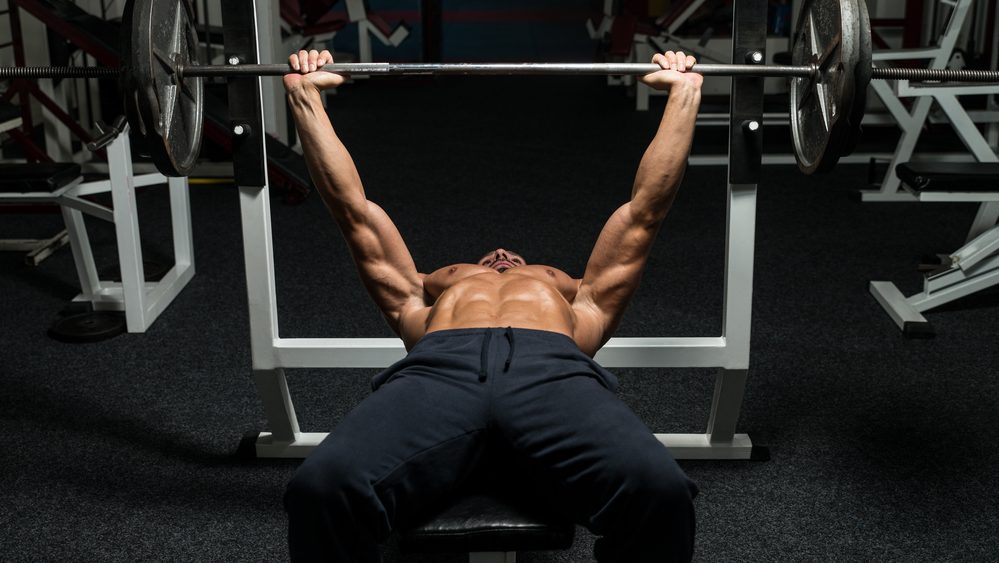

Bench pressing has been an essential part of workout and exercise routines for fighters, athletes, and fitness enthusiasts for decades. Bodybuilders used the bench press to work their pecs as early as the 1940s and 50s. Powerlifting became a separate sport in the 1970s mainly due to the popularity and effectiveness of the bench press.
Bench press offers a great core fundamental exercise used as part of an overall well-rounded workout and training plan. It helps to build muscles that produce upper body strength and adds immense power.
When done safely and correctly, including bench press into workout plans and training regimens are the best way to get a full, round chest with increased power. Bad habits and poor technique can lead to painful injuries and ineffective results.
Boost Bench Press Safely for Maximum Benefits
Whatever your goals or reasons for building upper body strength and power using the bench press, consult a qualified trainer at John’s Gym. This will ensure the effectiveness and safety of your workout.
Safely and adequately incorporating bench press into a well-rounded exercise or training regimen can build up strength and power in just about every muscle in the upper body, including:
- Chest
- Forearms
- Lats
- Pecs
- Rhomboids
- Shoulders
- Traps
- Triceps
Proper Bench Press Form Prevents Injuries
It is crucial to apply specific guidelines and steps when heading to the bench. Working hard and smart in conjunction with workouts or boxing classes, Austin residents take part in will go a long way to achieving weightlifting goals without getting injured.
Proper bench press form includes incorporating the following steps:
- Lie flat on the bench, feet firm on the ground, eyes directly under the bar
- Use a medium-strength grip, thumbs wrapped around the bar
- Looking up, straighten arms to lift the bar off the rack
- Smoothly lower the bar to the middle of the chest
- Evenly raise the bar straight up until arms are straight again
Telling someone to breathe may seem odd, yet breathing is an essential aspect of the process. Deep breaths when the bar is at the top will keep the oxygen flowing and the heart pumping.
Bench Press Tips
- Keep it tight: Shoulder blades and lats should be held tight throughout the process of bench pressing, even when warming up. A loss of tightness can result in missing a rep or getting injured.
- Butt down: The natural instinct when lifting from a prone position to lift the butt to generate more power. Those struggling with raising their butt may need to lower the weight or reevaluate foot positioning.
- Drive with the heels: Feet should be flat on the floor, using the heels to generate the power needed for the lift.
- No bouncing: The bar should be lowered smoothly and evenly, gently touching the chest before raising it back up.
- All the way: No cheating. Each rep should go all the way up to extended arms and come down to the chest fully. Half reps lead to half results.
Using a Bench Press Spotter
Using the bench press alone can be very dangerous. The smallest slip or mistake can lead to serious personal injuries. Utilizing a spotter is essential when bench pressing.
A spotter’s job is to monitor the lift and assist when needed. The spotter watches every rep and in the best of circumstances is not required for anything except to watch.
Spotting for others is not only common courtesy. It is also beneficial to observe others. A spotter can improve their own workout after watching and ensuring the safety of others.
Communication is critical, whether spotting or being spotted. Make sure both parties are clear about workout specifics like how many reps the one pressing is going for if they want help with lift-off and other preferences.
Bench Press Injuries
Proper warm-up and bench press technique will help to prevent injuries. Tight form and total control of the bar with the appropriate weight and number of reps is vital to get the best of the workout without getting hurt.
Even the most conscientious and aware bench presser is at risk of injury. Bench press injuries can range from minor aches to severe damages, and may include:
- Shoulder pain and injuries
- Lower back injuries
- Hyperextended elbows
- Muscle tears
- Crushed windpipe
- Sternum injuries
Serious injuries at the bench press, causing severe damage or extreme pain should be treated immediately by calling 911 or taking the person to the ER. In some cases, surgery and lengthy rehabilitation may be required.
Many injuries suffered while bench pressing must simply heal on their own, such as sternum or elbow injuries. Prescribed or over-the-counter anti-inflammatory medication can be used to help reduce pain and swelling.
Whatever the injury, it is important to let it fully heal before returning to the bench press. Working out with an injury will slow down recovery time and significantly increase in making the injury worse.
Self Defense and MMA Gym Austin, Texas
John’s Gym offers MMA classes, boxing classes, and self-defense classes Austin residents love. If you want to get in shape, and improve your overall health, get in contact with a member of the John’s Gym team today!
